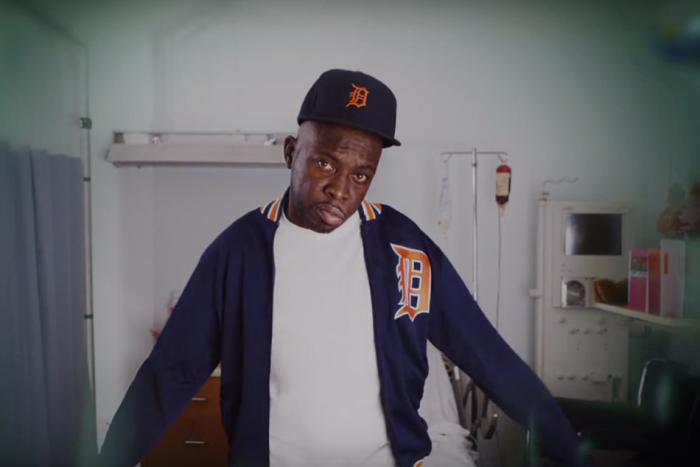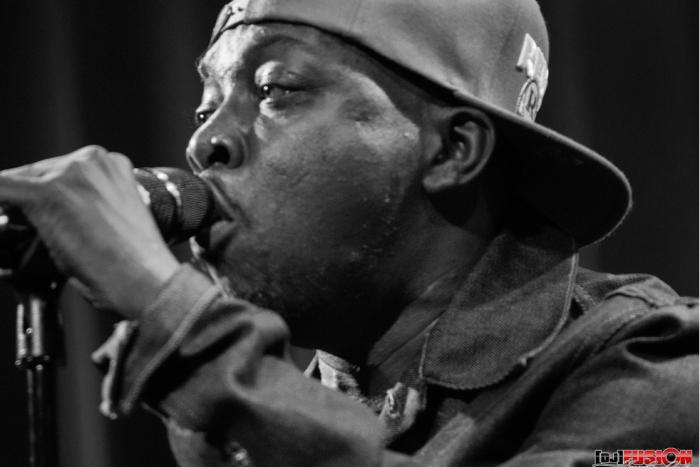When I was eight, I was told that people wouldn't respond if you shout the word “help.” Instead, you should shout “rape” or “fire.”
Later, outside in the snow, my best friend Quinn and I were playing hide and go seek tag. He caught me hiding underneath a bush on his front lawn, and began to tickle me until I screamed—the stated objective of the game. Remembering the advice, I hollered rape as loud as I could. I felt very, very powerful and then very, very ashamed. Quinn’s mother had heard me. She told me that we don’t use that word for no reason. It’s only for emergencies.
When women are in trouble in real life, it often doesn’t feel like what we’ve been trained to expect. There is no smoke, there are no alarms, just our internal voices, asking, “What’s going on here?” Our expectations come from after-school specials and reruns of SVU and movies of the week, in which the monster is obvious and the victim ultimately believed. We are warned about stranger danger. Shown lecherous drunks and mouth-breathing predators—caricatures of bad guys. When we do hear about the friendly neighbourhood serial attacker on the news, we get all the gory details. We can Monday-morning-quarterback the scenarios and loudly say, “Well, obviously this guy is a bad guy and I know what I would do if I was in a room with that bad guy.” But assuming the attacker looks like our construction of a monster, and the victim like our construction of a damsel in distress, has far-reaching consequences.
Emergencies so often don’t look like emergencies as we’re taught to understand them when we are children. Monsters don’t look like the monsters we’ve been taught to avoid.
According to statistics, one out of four North American women will be sexually assaulted in her lifetime. This number is higher in marginalized populations, climbing to one in three for women of color. And most of the twenty-five percent of women in the world who survive attacks are not falling prey to Law & Order-style predators and home invaders. Women are having these moments with men who will never do anything like that again, or with men who don't think of themselves as monsters and therefore don't think they could do anything monstrous. Friends, acquaintances, people who are good brothers, and great sons, and loving boyfriends to other women, are committing these assaults. And in these moments, these men who you will recognize from your office and your lobby and your dinner table, each make a decision—and it is a decision—to prioritize their needs, wants, or ego, over another person's body. And when they make that decision once, they may do it again, and again.
If you ask a man if he has ever raped someone, or tried to rape someone, he will almost definitively answer no. If you ask him if he has ever tried to have sex with someone who was too drunk to consent, or used a bit of force after someone had already said no, as some researchers did in 2002, about six percent of men will answer yes. Two-thirds of those men will, then, upon further questioning, admit to having done this more than once. In fact, the median number is six, meaning many have assaulted at numbers much higher.
It seems that not even the rapists think to call themselves rapists.
In these moments of assault, the danger may not feel so immediate and our responses may not be what common sense dictates. He was nice a few moments ago, we may think. Or, don’t make him angry. Or, even, this doesn’t happen to someone like me. We do not necessarily fight, we do not necessarily run, we do not necessarily scream. We freeze. We appease. We befriend.
When the bad guy isn't behaving like the sex-crazed villain and the victim isn't screaming, what do we do? How do we call our friends and neighbours rapists when rape is unspeakable?
*
When I was in my second year of university, I used to really like listening to music and wandering around side streets late at night, observing the silence and the way fog clung to the parked cars. I acted like I was in my own private movie, one in which the manic pixie dream girl is the star. I'd sing along out loud and draw things in the steam on car windows and have private dances. One night, I felt a stranger approach me from behind.
I moved towards the inside of the sidewalk to let him pass, but instead of walking by, he pushed me against a brick alcove next to the pavement. He was in his early twenties, and looked like a nu-metal nightmare, wearing mismatched black clothing and a goatee about three inches too long. He said, "You want to kiss me," with his face in my neck and his hands everywhere. I responded automatically: "Ew.” I pushed him, closer to a touch than a push, really, with my free hand, in the middle of his chest. He took a step back, surprised that it hadn’t been that easy. As I walked away I called a friend, who did not pick up, and had a fake conversation with his voice mail. I thought about how, right before the attacker approached me, I had drawn a happy face on a windshield and it served me right for thinking I was so irresistibly adorable.
When I told people about the goateed man later, I made it a funny story. Everyone checked if I was okay. No one suggested I call the police. I didn't think it was a problem, really, until I was walking near my house, alone, at night, and saw him again. We made eye contact. I went home and felt electricity running from my shoulders up to behind my ears. I felt a sour taste in the back of my throat and crumpled on the floor. I never made a report.
When scientists began to study stress, the participants, whether rodent or human, were nearly always male. Prior to 1997 only 17 percent of participants in laboratory studies of physiological and neuroendocrine responses to stress were women.
When the inalienable right that your body is your own is not respected, it’s isolating and terrible, to an absurd degree. There's something dark and baroque about being unmoored from your physicality, from having part of your selfhood denied. And there are a few things you’re not supposed to say or feel in the aftermath of sexual violence. You aren’t supposed to be confused, for one. You aren’t supposed to be “okay” after, you aren’t supposed to be okay with sex again, or want to go out. The complicated number of shoulds and musts, should-nots and don’ts, in regards to sexual assault may match up with or butt up against lived experience. For example, one should not shower. An instinctive response for so many makes it next to impossible to file a rape kit. A rape kit is, despite multiple-year backlogs, one of the few concrete pieces of evidence that make a rape trial winnable.
There are further ephemeral shoulds about the psychological effect a crime of sexual violence is supposed to have on a woman. As a victim, you should be plaintive and serious, perfect, sad and strong. But your memories are often not the graspable sort to immediately inspire a firm position. We assume the truth comes all at once, with perfect clarity, but experts maintain that trauma buffers long term memory processing. The recollections are not hard and concrete, but flowing like water—the details progress like waves, and are in turn muddy, or intensely clear.
You are definitely not supposed to laugh, because one thing you're definitely not supposed to admit about sexual assault is that it can be funny. For some reason it remains a conceit that responding to trauma with laughter invalidates the entire experience. But humour can be a callous protection against the terrible. There is joy in sharing and showing the wounds, and the fun ways you've dressed them.
It's one of the reasons slapstick exists, and a baseline of the comedic from the bacchanal to Shakespeare. The manner in which men swan around in these moments, cocksure and terrible, is ridiculous. They take their most base desires and act on them in a way that would be pure buffoonery, if only it were neutered.
*
Most violence against women doesn’t come from strangers in dark alleys—studies put the number of assaults on women by strangers at thirty percent. These things do happen, and they are real and terrifying, but most sexual assaults are committed by someone the victim knows, in situations that look and feel very different than we’ve been prepared for. There doesn’t need to be a weapon, or even screaming, for something bad to have happened.
In 2008, I had gone over, late, to an acquaintance’s house, drunk. He knew I was seeing someone and I had been there before, so I thought I was safe. He was, and I presume still is, at least fifteen years older than me. He was very close friends with someone I considered a brother, and I thought the rule of transitive property would apply.
I was not attracted to him that night or any night before or since. I woke up to him having sex with me and felt very confused and very unsure of what I had consented to. When I realized what was happening I made a moment-by-moment decision not to escalate. What increased danger would I be in if I made my internal feelings external? I relented, some would say participated, and had very little memory of what happened. I do know that when I left that morning he asked if I was “going to make it weird,” if I was “going to be one of those girls," and gave me ten dollars for a cab, which I hated that I had to accept. When I got home it was the only time I have ever felt it necessary to have a shower while curled in the shape of a ball.
I didn’t tell anyone I had spent the night there, or what happened, though he told people his version, I found out later. Instead, I immediately went out and slept with someone else, and then acted like a generally insane person for approximately three months. We remained Facebook friends.
Just as the monster often doesn’t look like the monster we’ve been trained to expect, and doesn’t identify as a monster, there is also the psychological issue of victimhood—the same culture that tells us what the bad man looks like also tells us what the victim looks like. She is shattered, broken, defined by her stolen virtue, innocent until so cruelly defiled. “She may never laugh again,” says the onlooker, gazing at the broken flower in pity. “She certainly will never date.”
What happens when we refuse to escalate the situation, to call it an emergency? Because an emergency, a crime, means there is a subject and an object and fuck right off if that’s what I’m going to be. Even in the moment, there are calculations being made not just for the protection of oneself in the present, but the future. If I don’t call this rape, then I can’t be the victim, and no therapist visits or crying or fights with parents or pitied looks from peers will follow.
As I cocooned myself in my non-victimhood—I partied, I had sex, I told no one and made a lot of jokes—I protected myself from the gaze of strangers, the doubt, the attacks on my character and the she said/he said dynamic I was certainly not strong enough to survive. By the time I was ready to call it what it was, months had passed.
*
The unspoken assumption about sexual assault that becomes spoken, particularly when the police, media, and lawyers get involved, is, “Why didn’t they fight? Why didn’t they leave?” As though relenting is the same as consent.
The idea of “fight or flight” was discovered and coined by psychologist and scientist Dr. Walter Bradford Cannon in 1915, and quickly entered the lexicon. This idea was adopted so quickly in large part because Cannon was a scientist rock star who wrote bestselling books, studied “Voodoo death” and was the first to climb a mountain now, relatedly, named Mount Cannon. It’s also an idea that makes intellectual sense—a dude threatens you, you either punch that dude in the face or you turn and run. Easy.
Studies now suggest that this idea of fight or flight is only one part of a stress response—stress responses are more complicated than punch or run in general, and in women in particular. Fight or flight has been amended to include two less common responses to the influx stress triggers—a hormonal fruit basket of testosterone, adrenaline, cortisol and dopamine. For some, some of the time, this hormonal response that can comingle into a “freeze”—think of a gazelle that plays dead after being caught by a lion. For others, other times, the response is to “appease,” time is spent trying to quell the threat by behaving submissively—think of a lion trying not to upset a bigger lion.
When scientists began to study stress, the participants, whether rodent or human, were nearly always male. Prior to 1997 only seventeen percent of participants in laboratory studies of physiological and neuroendocrine responses to stress were women. In 2000, a team led by Shelley R. Taylor began to compile the research on female responses to stress. They discovered that the biological response that causes the “fight or flight” response in males is more mitigated in females. When presented with a trigger, women respond with less adrenaline and testosterone, resulting in a lower fear response. They are less afraid than men when under duress. Because the fear is lowered, instead of responding with the extremes—punching, running, playing dead—scientists have determined women generally respond with a strategy all their own—befriend and tend. They calm and deescalate through social interaction and emotions, by talking and then tending to themselves or others.
Researchers aren’t sure if it’s something evolutionary—if women are typically primary caregivers and responding to a screaming child by punching it or running away would be a less than successful strategy—or cultural.
What science is telling us is that there are responses beyond fight or flight, that women tend to respond with less fear in a moment of peril, making use these other responses as their primary survival strategies. In the world of sexual violence this has obvious and long reaching effects. We are less likely to be afraid enough to label the situation an emergency, and rather than punch some date rape-y d-bag in the throat or try to flee, we look to deescalate.
Women stop, behave submissively and then try to connect emotionally. They do what they need to do to survive. Freeze, appease, tend, befriend.
What happened to me was rape, but was it still an emergency?
*
A few years ago, I woke up at three in the morning to the loudest screams I'd ever heard. The woman was somewhere outside my window, and she wouldn't stop—her cries were fierce and had none of the amusement or bravado I was used to hearing in the drunken revelers walking past my home. I looked around outside frantically. A few people on the street had stopped to look but she was out of view. I grabbed my phone.
I'd heard that 911 could put you on hold, but it was a Kafka-esque surprise nonetheless. As I waited for the dispatcher, the screaming woman quieted.
"Hello 911, do you need police, ambulance, or firefighters?" asked the voice on the other line.
"Um, I guess police."
"What's the situation?"
"There was a woman screaming for help outside my apartment."
"Is she actually screaming for help? Are you sure she's screaming for help?"
I am sure the dispatcher was doing her job, but the specificity shocked me. That a woman could be screaming and that we would need to somehow ascertain whether or not it was for help shocked me. What more does she need to do to show she is in distress and danger? What more can she do?






